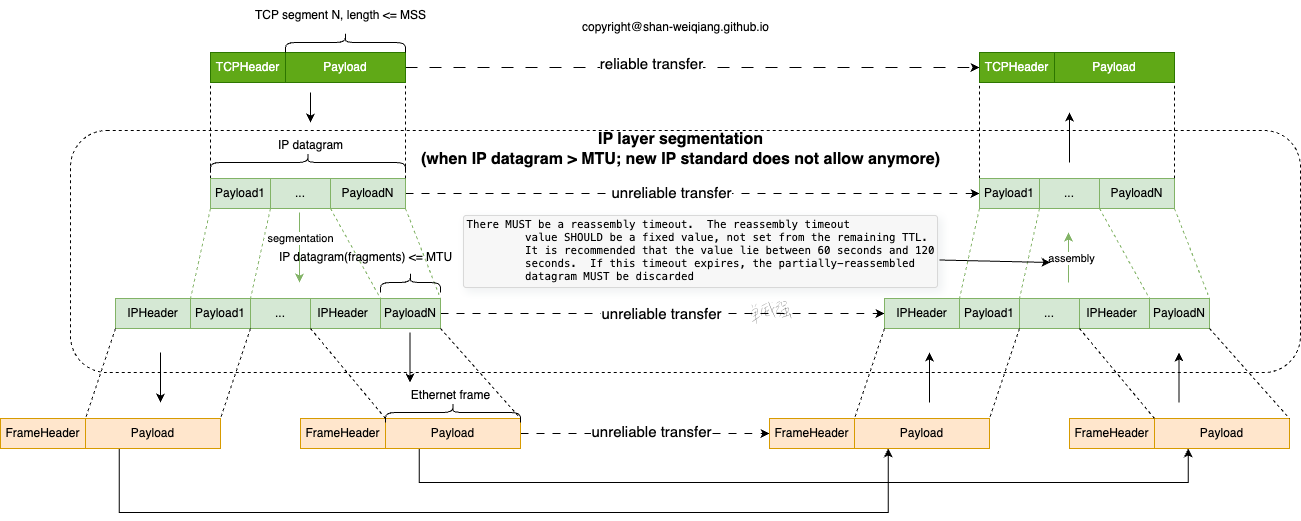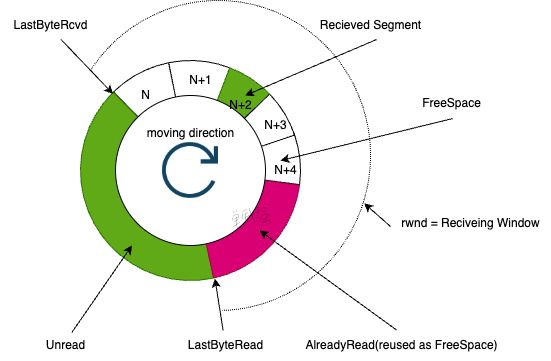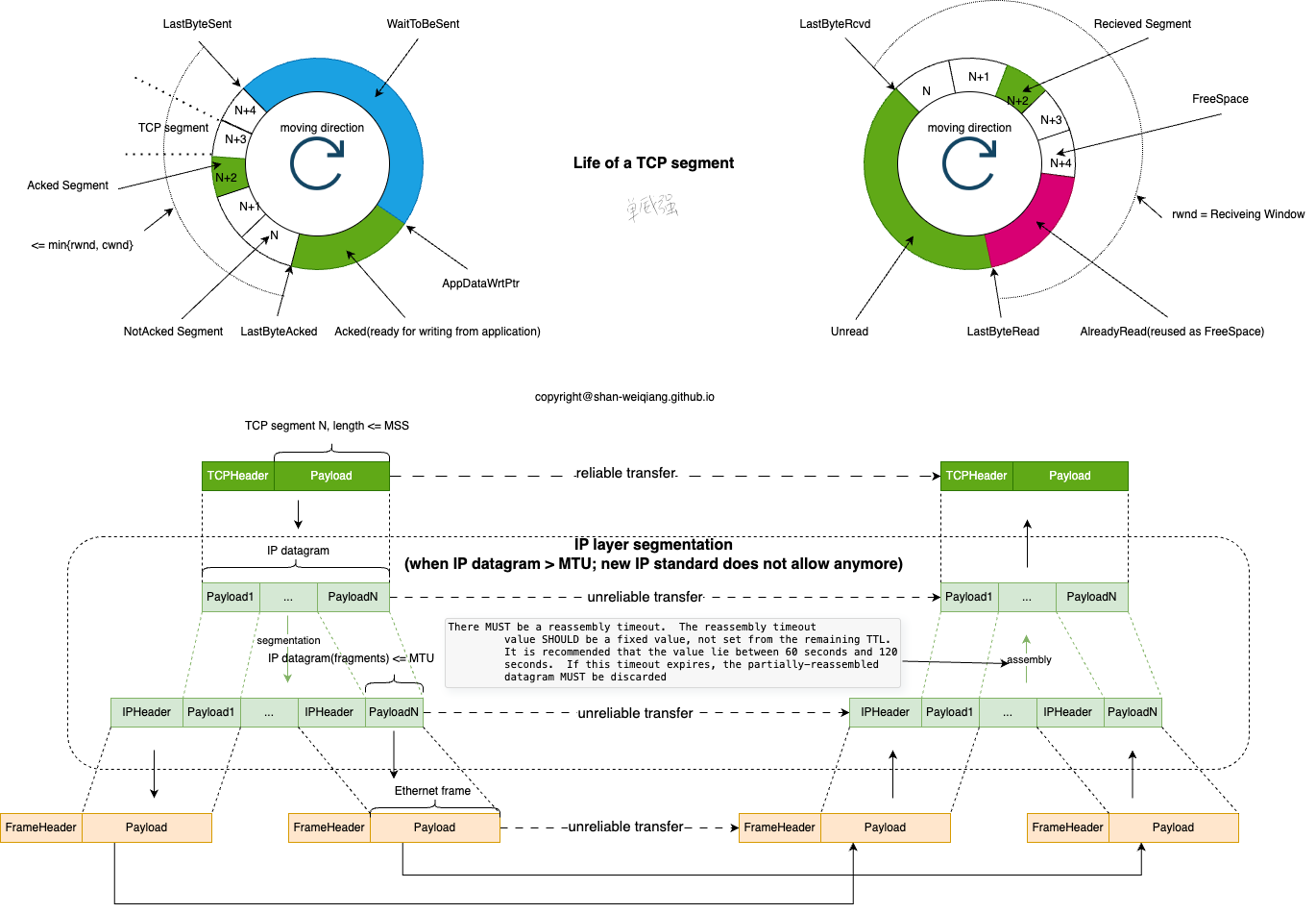Life of a TCP segment
This article iterate the process from write to a TCP socket, to the read from a TCP socket.
 |
|---|
| TCP kernel buffering, sender side |
1.Application process calls write to write bytes into TCP socket, kernel check whether there is available buffer space, Acked(ready for writing from application) in the diagram, to store those bytes. If yes, kernel copies all the bytes into this area, starting from AppDataWrtPtr. If not enough space, kernel use all of the Acked(ready for writing from application) space. In both scenario, write return the number of bytes copied.
 |
|---|
| Starting a journey of protocol stack |
2.TCP running in kernel checks LastByteSent - LastByteAcked, and compares it with min{rwnd, cwnd}, in which rwnd stands for Reciving Window in the reciever side and cwnd stands for Conjestion Window in sender side. If it is smaller than min{rwnd, cwnd}, kernel consume a block of bytes, starting from LastByteSent onwards in the WaitToBeSent area, and make it a TCP segment. The length of the segment is decided by the MTU size in data link layer, which starnds for maximum transmission unit. The sum of segment and TCP header, anbd IP header should fit into a MTU, which leads to a maximum segment size(MSS) that equals: MTU - TCP header size - IP header size. This is normally 1500 - 20 - 20 = 1460 bytes. In this diagram, the numbered N, N+1, N+2.... stands for an individual segment.
3.TCP running in kernel add TCP header in the segment and make it a IP datagram payload. Since the IP datagram will be routed across various endpoints, routers, it is possible that the IP datagram plus the IP header is bigger than the MTU in the data link layer. In this case, the IP datagram needs to be segmented. IP running in the kernel divides the IP datagram into seperate fragmentations, each of which is a smaller IP datagram(with a unique sequence unmber). This is the only layer that will do segmentation in the TCP/IP protocol stack.
4.Data link layer accept IP datagram from IP layer and enclose the whole IP datagram in one frame and add Frame Header into it and switch it to destination interface.
5.At the reciver side, in the data link layer, it just unpack it and after checking pass it to the IP layer
6.At the IP layer, if the IP datagram is fragmented, it will wait for all the fragmentations to arrive during a specified time duration, counted with a timer. If with this duration, all fragmentations are recieved, IP running in kernel assembles them and compose a complete IP datagram and pass it to TCP layer. If the IP datagram is not fragmented, IP layer just unpack and after checking pass it to TCP layer
 |
|---|
| TCP kernel buffering at the reciever |
7.TCP running in the reciever side accept the TCP segment and copies it in the kernel buffer, starting from the LastByteRcvd and send a ack to the sender. Note that at the reciever side, it does not need to worry there will be no space left to store the recieved segment, because in the ack to the sender, it will contain the size of the rwnd, and sender will assure that LastByteSent - LastByteAcked <= min{rwnd, cwnd}. The flow control is done in sender side, not the reciever side.
In above steps, there are some notes to take:
-
Except for the TCP layer, all layer beneath are unreliable transfer
-
IP layer support segmentation because it will not know before hand which data link layer it will pass through, such as Ethernet, Wifi. It might happen that the IP datagram is bigger than the MTU. However, in new IP standards and IPv6, support for segmentation is removed.
-
Except for the TCP part, all the layers beneath are also applicable to UDP and any other protocols using IP
-
The buffering at sender or the reciver side can also applicable to unix domain socket
The whole picture:
